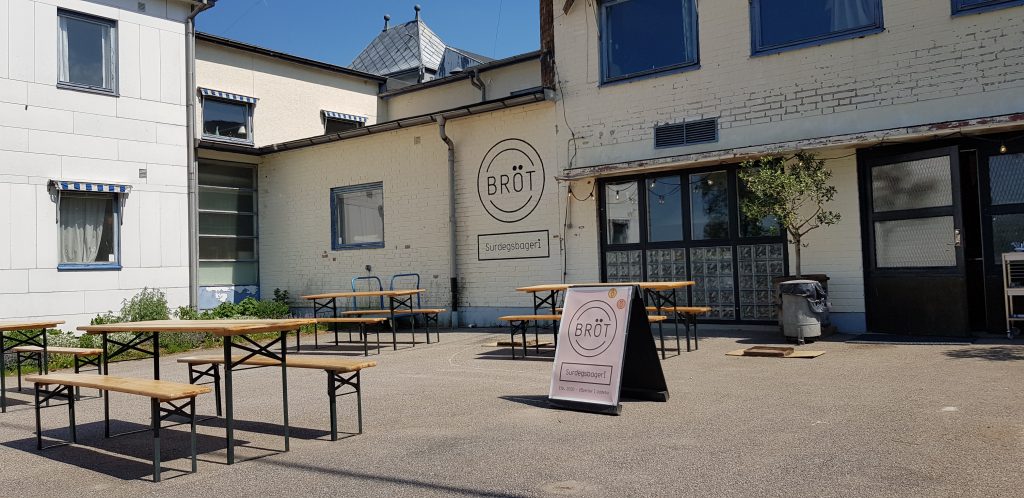By Ola Wetterberg (and the Gothenburg team)
It has been a long wait, but last week Sweden dropped the corona restrictions. With the slow return to normality it is becoming easier to travel and meet all over Europe. Since the ESRs haven’t met all together in person since the kick-off in October 2019 we are especially looking forward to the two weeks of the Living Lab in Rome in November 2021, and we are keeping our fingers crossed all can go ahead as planned.
As a good sign of the improving times, our guest ESR from Newcastle University, Anna Tonk, arrived in Gothenburg last week and has begun a two-month-long stay and secondment.
Anna works on post-industrial landscapes and futures development and will do her secondment at Nääs a short distance outside Gothenburg. Nääs is an old industrial and educational centre from the 19th C. Her host is Region Västra Götaland that runs a resource centre for Crafts and Building Preservation close to an old 18th century mansion, embedded in beautiful landscapes and the old industrial area. The post-industrial site has been developed for multiple uses, culture, craft, entrepreneurship, small industries, visitor experience, housing, and leisure since the 1980s.

Anna will also work together with our two Gothenburg ESRs, Rebecca Staats and Maitri Dore. Both Maitri and Anna are part of WP 5 on Changing Landscapes. Together with Marta Ducci, they are presently working on a scientific journal article giving multiple perspectives on the complex issue of how heritage and heritage professionals interact with large scale processes of environmental change that are driven by both natural and cultural agents. The opportunity to at last meet in person to discuss and write is welcome. Even though Marta can still only join us online, we are looking forward to meeting all together in Rome soon.
Anna’s visit to Gothenburg is also a welcome opportunity to reflect on connections between case studies being undertaken by our Gothenburg ESRs. Rebecca and Anna have similar case studies that focus on industrial environments that are situated outside larger cities and are being adapted for contemporary uses. Here heritage is an agent for place development being picked up on by both individuals and institutions striving for sustainability within the larger economic and political context.
Post-industrial sites in Sweden have a particular character. While the industrial revolution in Sweden had its breakthrough in the 1850s, urbanisation and city growth did not take off until a few decades later. This meant that during this period industrial development was concentrated in rural settings and small municipalities. In fact, Sweden never had a solid urban tradition, with even early industrial developments starting in the countryside. This is true not only for industries heavily reliant on raw materials like ironworks and sawmills but also for manufacturing and trade. As many of these older industrial sites have become redundant, they have in some cases been seen as resources for new possibilities by minor municipalities. These new uses range from heritage and destination sites for tourists, to resources for new kinds of small-scale production.
One of Rebecca’s case studies has been Uddebo, a small village with 400 inhabitants located 100 kilometres from Gothenburg which once was home to an important textile industry. In Uddebo there is a mix of entrepreneurship and small businesses, cultural events, experimental projects and social activities, with the village inhabitants developing their community with “sustainability, culture and time” as guiding principles. Place development projects like this are not without their difficulties and frictions. From a local perspective, the mix of new people moving in combined with long-term residents creates a situation where different mindsets and experiences meet and which opens up new possibilities for the future of the village. Looking from a heritage perspective, the village showcases the challenges of supporting local and bottom-up processes without interfering with demands emanating from funding schemes and regulations.


Konsum (old co-operative grocery store, now studio and event space) 
Gula Huset (old textile factory warehouse, now studio space, “free shop” and loppis (flea market)
Both Rebecca and Anna are trying to understand complicated processes of place development like these, not only from a case-by-case methodology but by situating them in a critical theoretical and political framework crossing disciplinary boundaries.
There are also connections with Maitri’s work. Even if the step from local placemaking to mega-sized infrastructural projects like railway tunnels under Gothenburg and Mumbai as studied by Maitri can seem significant, there are both similarities in theory and practice for these studies. Can heavy interventions in the built fabric be compensated by cultural and heritage activities to enhance the place? To what degree can such compensation be relevant for ordinary citizens, and to what degree will they become part of strengthening an already established authorised heritage discourse?
Now, when we all can move and meet, we will take the opportunity to make site visits and discuss altogether, ESRs and supervisors together. We have waited a long time for this.

